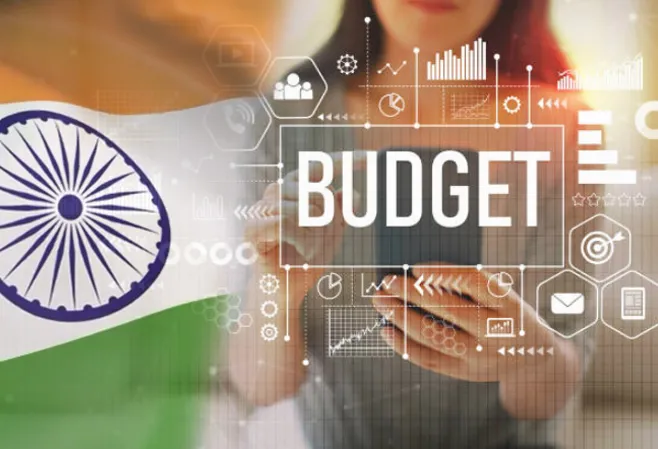-
CENTRES
Progammes & Centres
Location
Budget 2022 could be a turning point for India in achieving its climate ambitions if adequate steps are taken to improve investments and innovation in the green sectors

This brief is a part of the Budget 2022: Numbers and Beyond series.
The COP26 summit propelled several countries to scale up their climate ambitions and particularly marks a turning point for India, with a commitment to achieve carbon neutrality by 2070. However, Prime Minister Modi clearly highlighted that India expects around US$1 trillion in climate finance to meet its bold climate targets. He asserted that promises on climate finance have been hollow, so far, and increasing pressure should be put on countries not following through on their promises. In fact, the issue of financing the green transition has been a key pillar of India’s actions on several multilateral platforms.
The present fiscal and taxation structure does not provide the right signals to direct investment to the green sectors.
In time, this pressure will hopefully translate into actual actions from global investors. However, we must also focus on creating the right domestic conditions to actually absorb these investments. The present fiscal and taxation structure does not provide the right signals to direct investment to the green sectors. Further actions are also needed to address some of the long-term impacts of the green transition, such as the evolving dynamics of green supply chains. This year’s budget provides a good opportunity to take concrete steps towards creating an enabling ecosystem to accelerate green finance. In this piece, we highlight three such areas where some action will be desirable.
Foreign banks located in India are well placed to act as an effective conduit to global commercial capital, which can be leveraged for investments in green sectors. However, foreign banks in India pay a significantly higher tax than their domestic counterparts. Branches of foreign banks are taxed at the base rate of 40 percent (plus surcharge and cess) as opposed to domestic banks which have a lower rate option at 22 percent (plus surcharge and cess) under the current tax laws. The differential serves RBI’s objective of encouraging foreign banks to set up wholly-owned subsidiaries in the country. However, regulatory challenges and operational bottlenecks have precluded deep foreign penetration and, therefore, the share of foreign banks in the banking system’s total assets stands at less than 10 percent. Currently, there are only 46 foreign banks in India, which collectively operate around 300 branches.
The budget provides a great opportunity to address this issue. In line with the global practice of corporate tax parity, the differential between the corporate tax levied on branches of foreign banks and domestic banks should be reduced to ensure parity. All BRICS countries, except India, as well as majority of Organisation for Economic Co-operation and Development (OECD) nations treat local and foreign entities as equal. This will encourage foreign entities to consolidate and even expand their operations in India, enabling a greater influx of global commercial capital.
Regulatory challenges and operational bottlenecks have precluded deep foreign penetration and, therefore, the share of foreign banks in the banking system’s total assets stands at less than 10 percent.
This move should be supplemented with efforts to encourage foreign banks to invest in green sectors using the priority sector lending mechanism. The RBI guidelines on priority sector lending aims to encourage credit penetration to certain credit deficient areas, including agriculture, renewables, SMSEs and has recently expanded its ambit to include start-ups as well. Perhaps, in a classic quid pro quo, the priority sector lending limits for the foreign banks should be increased beyond the current threshold. Further, the limits should allocate a quota for green investments. As an example, a certain percentage should be reserved for clean-tech companies in the overall start-up lending bracket. This will give an impetus to innovation and invention of scalable green technologies, which hold the tremendous potential to expedite our efforts in combating climate change.
A carbon tax sets a price on carbon by defining an explicit tax rate on the carbon content of fossil fuels. It is considered an effective way to reduce carbon emissions, and over 27 national jurisdictions and eight subnational jurisdictions have successfully implemented a carbon tax; however, it continues to remain a contentious subject in India given its political un-popularity, and as it involves a very complex and tedious tax system.
While there is a plethora of fiscal and regulatory instruments deployed to reduce carbon emissions, they have been largely ineffective in mitigating at scale. Therefore, the budget provides an opportune moment for the government to prepare the ground for a national carbon tax, directly linked to the intensity of carbon emissions in fuels. This will send the right price signals to producers, investors, and consumers to shift towards cleaner sources of energy.
The budget provides an opportune moment for the government to prepare the ground for a national carbon tax, directly linked to the intensity of carbon emissions in fuels.
A paper by Shakti Sustainable Energy Foundation and EY, clearly delineates the significance and urgency of imposing a carbon tax to limit carbon emissions while augmenting fiscal revenues, which are currently heavily dependent of fossil fuels, and therefore, preclude a stringent policy shift towards renewables. Such a tax can also improve the tax-GDP ratio and generate additional funds, which can be utilised for offsetting the burden of the tax on low-income groups and facilitate greater investments in green and environmental projects. As an example, Japan uses carbon tax revenues to promote renewable energy and low carbon and energy efficient technologies, whereas Ireland transfers the total revenues to the general budget to allow greater flexibility in labour taxes. Denmark, on the other hand, uses a hybrid distribution model, where the revenues are used both to subsidise energy efficient investments and reduce taxes on labour.
In an ideal case scenario, a national carbon tax would be most effective but will require an amendment to the Constitution and can be a long-drawn out process. The government should plan to build consensus for legislating a carbon tax in its medium-term ambitions. However, to achieve results in the immediate future, applying a carbon tax within the legislative framework of GST may be most suitable, and will also serve as an opportunity to reform the indirect tax system. In its current form, while most fossil fuels come under the GST except crude, petrol, diesel, natural gas, and aviation turbine fuel (ATF), there is significant variation in the taxation rates which are not linked to the carbon intensity of the fuel. As an example, tax rates are lower on fuels such as coal with a larger carbon footprint vis-à-vis fuels such as natural gas with a lower carbon footprint. It is important that all petroleum products are integrated in the GST base and a supplementary levy is imposed depending on the carbon/sulphur content of the fuels. The carbon cess should be applied only at the first point of supply (upstream), be incremental in nature and implemented in phases to cushion the blow and prevent disruption of supply chains and business operations in the short term.
To achieve results in the immediate future, applying a carbon tax within the legislative framework of GST may be most suitable, and will also serve as an opportunity to reform the indirect tax system.
A buy-in from all the States will be critical in this regard. The states continue to remain resistant to include petroleum products in GST for the fear of loss of state revenues given the centre’s tardy disbursement record. Nearly INR 52,000 crore of GST compensation was due to the states as of September 2021. Timely compensation disbursals by the Centre will be important to gain state commitments. Greater Centre-State cooperation and collaboration will be vital to pass, implement, and effectively leverage the carbon tax mechanism.
The supply chain for green technologies continues to remain import dependent. India needs to rapidly indigenise the green manufacturing value chain for the green transition to spur economic growth. To this end, the Union government has already implemented three important performance linked incentive (PLI) schemes related to electric vehicles, battery manufacturing, and solar PVs. The aim is to provide sales-based incentives for firms manufacturing these technologies at scale. However, in addition to indigenous manufacturing, we also need to encourage indigenous designs. By designing our own green products, we can bypass the various intellectual property issues associated with foreign technologies while also reducing costs and maximising the use of raw materials most suited to India. This will be crucial to ensure that the green transition does not increase our dependence on a small set of countries who control the technology and raw materials at present.
By designing our own green products, we can bypass the various intellectual property issues associated with foreign technologies while also reducing costs and maximising the use of raw materials most suited to India.
Unfortunately, design engineering is systemically undervalued in India. Government funding for R&D remains scarce, and jobs related to core engineering are on the decline. Some additional initiatives by the government could go a long way in addressing this problem. Firstly, the PLI schemes mandate firms to have a specified level of investment to avail the subsidies; a part of this investment should be mandated to be on R&D. Secondly, the Union government recently reduced the tax exemption on R&D expenses for manufacturing firms from 150 percent to 100 percent. This move seems counterproductive at a time when we need to accelerate innovation. In fact, there is a strong case to increase the tax exemption to 200 percent on R&D expenses. Finally, allocating funding to set up Centres of Excellence or government-funded incubators for start-ups could also spur innovation. The existing grants given to start-ups should also contain a specific allocation for green technologies. Essentially there needs to be a change in the thought process towards ‘designing in India’, and some strong initiatives in this year’s budget would be a great starting point.
The budget announcements send out a strong signal to the global community on a country’s priorities. This year, there is an opportunity to send out a strong signal to the global investor community that India is ready to take a big leap in our mitigation efforts.
The views expressed above belong to the author(s). ORF research and analyses now available on Telegram! Click here to access our curated content — blogs, longforms and interviews.

Mannat Jaspal is currently serving as a Director & Fellow - Climate and Energy, at the ORF Middle East, UAE. Her research delves into the ...
Read More +
Promit Mookherjee was an Associate Fellow at the Centre for Economy and Growth in Delhi. His primary research interests include sustainable mobility, techno-economics of low ...
Read More +